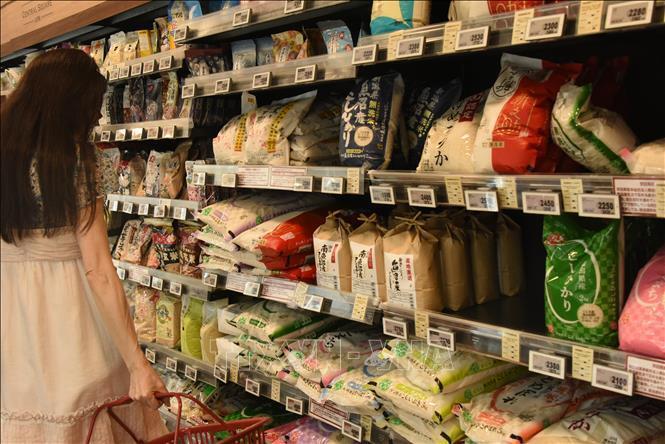Record surge in Japanese rice prices: Vietnam’s new role on the Global food map
Date: 2025.07.07
1. Why are rice prices in Japan skyrocketing?
Domestic rice prices in Japan are soaring due to multiple factors:
🔸 Unfavorable weather 🌦️: In recent years, Japan has suffered from recurring droughts and severe storms, which have significantly reduced rice yields.
🔸 Rising production costs 💸: Increases in fertilizer, fuel, and labor costs have pushed rice production expenses to record levels.
🔸 Shrinking cultivation area 🏙️: Urbanization and a shortage of agricultural labor have led to a steep decline in rice farming land.
🔸 Global market volatility 🌍: Major rice-producing countries have restricted exports, tightening global supply and pushing up Japan’s import prices.

Source: cafef.vn
2. Japanese rice prices reach unprecedented levels 📈🍚
🔸 Record-high prices: In 2024, the average price for unpolished rice hit ¥26,485 (approx. US$178) per 60kg bag 💰—an alarming 73% year-on-year increase! 🚨
🔸 Retail price shock: As of May 2025, a 5kg rice bag costs ¥4,268 (US$29.90)🤯, compared to ¥2,228 (US$15.60) a year earlier. That’s nearly a 5–6x increase since early 2023. 😱
🔸 Impact on households: With this spike, families consuming 20kg of rice per month face an additional annual cost of ¥98,000 (US$687). 💸 Many low-income households have been forced to cut rice consumption. 😥
🔸 Government intervention: The Japanese government responded with emergency measures, including releasing rice from national reserves—initially 210,000 tons, later increased to 300,000 tons 📦—to stabilize prices. Such moves are rare, usually reserved for major natural disasters.

Source: lsvn.vn
3. Vietnamese rice – A Timely solution for Japan’s market
Amid supply shortages, Vietnamese rice exports to Japan represent a major turning point:
🔸 Overcoming quality barriers 🔍: Japan is one of the world’s most demanding markets. Acceptance of Vietnamese rice proves its rising quality standards.
🔸 Competitive pricing 💰: Compared to traditional suppliers, Vietnamese rice offers a more affordable alternative while meeting strict Japanese standards.
🔸 High growth potential 📈: Entry into Japan paves the way for Vietnamese rice to penetrate other premium markets.

Source: vneconomy.vn
4. Opportunities and Challenges for Vietnamese Rice
🔹 Major opportunities:
Brand elevation: Exporting to Japan enhances the international reputation of Vietnamese rice.
Market expansion: Japan could serve as a gateway to other high-standard markets like South Korea, the EU, the U.S, etc.
Promoting sustainable agriculture: Meeting Japanese requirements will push Vietnam to upgrade its supply chains and cultivation technologies.
🔸 Challenges to overcome:
Maintaining consistent quality: Strict food safety and quality controls demand tight management from production to export.
Global competition: Vietnamese rice must compete with established exporters like Thailand, the U.S., and Australia.
Long-term marketing strategy: Gaining lasting consumer trust in Japan requires a strong brand identity and emphasis on quality and unique value.
Conclusion: A Golden Opportunity for Vietnam’s Rice Industry
Japan’s rice price crisis is a clear indicator that Vietnamese rice is poised to take on a bigger role in the global food supply chain.
👉 Interested in Vietnam’s rice export market? Follow Help All for the latest updates and partnership opportunities!






